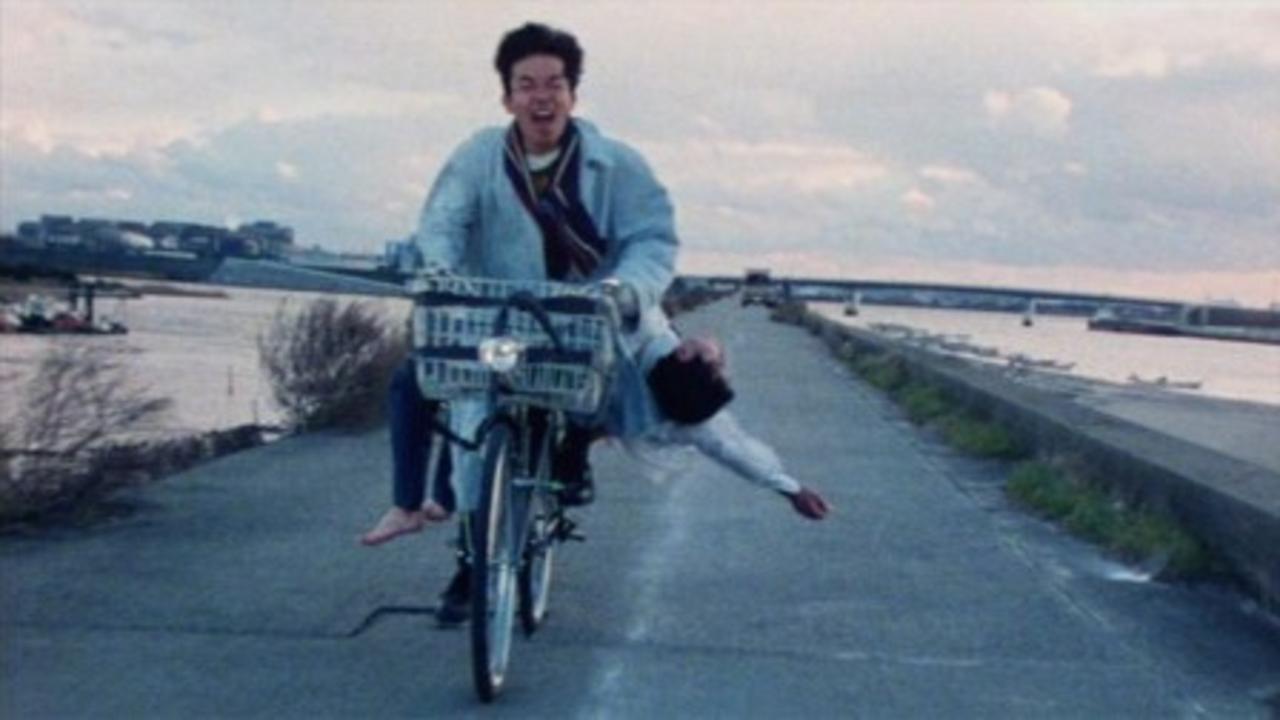Sion Sono’s 1990 debut feature is a coming-of-age story heavily influenced by the then-fashionable minimalist style, but with a few of its own distinctive quirks. Sono himself plays Shiro, one of three friends who hang around, deliver newspapers, and study for their college entrance exams. Shiro’s best friend, Keita (Masahiro Sugiyama), is under pressure from his family to become a doctor and pines for an old girlfriend (Hiroko Yamamoto). Shiro is ambivalent about college; he just wants Keita to help him finish the short film they worked on in high school, a film which Keita says he doesn’t even remember. The film-within-a-film is shot in a sepia-toned Super 8, with pre-modern special effects; it’s about a group of friends who play baseball and who conjure an imaginary runner to round out the team. The runner (who wears a trench coat and a Godzilla mask) eventually comes to life, and admonishes his team to keep moving forward, to stretch first base on into the unimaginable distance. The short is beautiful as is, but Shiro wants to add a second act, a goofy sci-fi conspiracy story set around the rusted-out playground that the friends call home. Sono allows the short to inform his primary narrative, deftly blending its imagery and transforming an off-beat story into an increasingly abstract one, with metaphorically blunt scenes of alienation and despair.
A coming-of-age story heavily influenced by the then-fashionable minimalist style.
Like Tsai Ming-liang and Jia Zhangke, Sono is particularly attuned to the importance of sound and off-screen space in minimalist filmmaking. The rattle of a matchbox is repeatedly linked to the rumbling of a distant train and the clickety-clack of bicycle spokes, the soundtrack of Sono’s cluttered and dilapidated industrial hometown. Bicycles suffer terrible damage, but always off-screen (one, buried and resurrected, disintegrates in a series of cuts, like a Méliès trick). Absence and elision increasingly dominate the second half of Bicycle Sighs, as in a long sequence in which Shiro’s sister, Katako (Hiromi Kawanishi), returns home carrying a makeshift flag, flying a large pair of boxer shorts. The camera pans as Katako rounds the outside of the house, and lingers on an empty hallway while her mother’s voice orders an army of giggling children to “go play with Katako.” The pan then reverses as Katako re-emerges with a new flag—a tie-dyed banner bearing the character for “Me”—and followers her to a tree, where she climbs out of frame. This sequence wouldn’t be out of place in a Tsai film—though it’s hard to imagine Lee Kang-sheng doing something so obvious as flying ‘the flag of his self.’ Shiro later adopts his own “Me” flag, wandering the streets alone on his birthday (which is also New Year’s Day, because of course), while Keita becomes catatonically unhinged, paralyzed by his ex-girlfriend, who haunts him with a movie camera, and his family, who wear ape masks. All this culminates with Shiro and Keita going on a long bicycle journey, following the first base line laid out by the imaginary runner, and ends in an unseen fire, just a few feet shy of the ocean, at the end of the earth.







